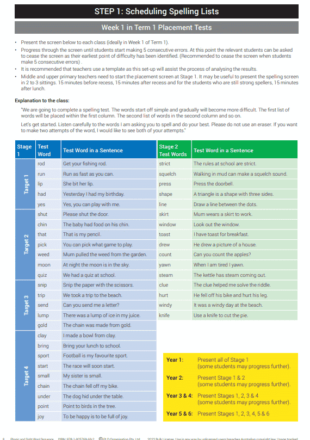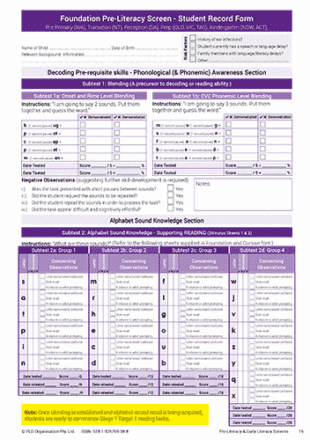This handy Synthetic Phonics Flip Book for Stage 1 resource is intended to provide important synthetic phonic concepts in a practical format which will assist when teaching the whole class or small groups of students. Synthetic phonics is a way of teaching children to read and spell. It has been identified as the most successful approach to establishing early literacy skills. The ‘synthetic’ component relates to the ‘synthesising’ or blending of phonemes (or individual speech sounds) and the ‘phonic’ component relates to written symbols (graphemes) being linked to the individual speech sounds (phonemes).
In order to learn how to read, a child links letters to speech sounds and then blends them together to form words. When learning to spell a child separates or segments a word into the individual speech sounds within the word while linking the sounds to letters.
It is generally agreed that there are approximately 44 sounds that make up the English language. As there are only 26 letters in the alphabet some letters need to be combined to represent the remaining speech sounds.
Features:
Designed by speech pathologists for use in schools.
The flip book is based upon PLD’s ‘structured synthetic phonics’ (SSP) approach.
Early phonic concepts are introduced in a progressive manner.
A range of reading and spelling words are provided for each alphabet and phonic sound.
Students associate a picture, and keywords with each phonic concept.
An effective and engaging way to develop early phonic concepts.
The Flip Book contains the following levels:
Group 1 – s, a, t, p, i, n (cards with yellow borders)
Group 2 – m, r, h, e, d, c (cards with blue borders)
Group 3 – f, l, g, o, u, b (cards with green borders)
Group 4 – w, j, v, k, z, y, x (cards with red borders)
Group 5 – sh, ch, th, oo, ee, ch, wh, qu (cards with purple borders)
Group 6 – ar, or, ay, ai, er, oi, oy, ing (cards with orange borders)
This resource is part of the Synthetic Phonics Flip Book range, view the other levels below:
Synthetic Phonics Flip Book – Stage 1 & 2
Synthetic Phonics Flip Book – Stage 2, 3 & 4
Synthetic Phonics three Flip Books in a bundle
This publication is mentioned within the Year 1 & 2 Teaching Sequence Manual on pages 9 – 13.
Generous discounts apply for bulk orders
5 to 9 copies – 15% discount applies
10+ copies – 20% discount applies










